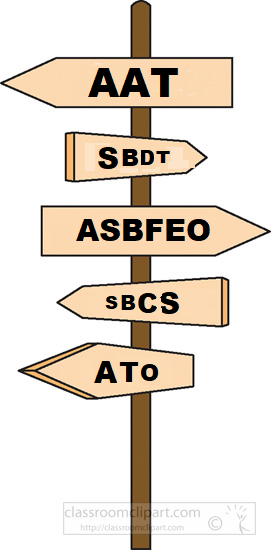 In the recent case of Pike v Commissioner of Taxation [2019] FCA 2185 Federal Court judge Logan J. noted:
In the recent case of Pike v Commissioner of Taxation [2019] FCA 2185 Federal Court judge Logan J. noted:
This is the third in a succession of taxation appeals in the original jurisdiction entailing a tax residence issue, the others being Stockton v Commissioner of Taxation [2019] FCA 1679 (Stockton) and Addy v Commissioner of Taxation [2019] FCA 1768 (Addy), which have fallen for determination by me since the Full Court’s judgment in Harding v Commissioner of Taxation (2019) 365 ALR 286 (Harding).
The Commissioner’s losses
In each of the cases, the Federal Court overturned decisions of the Commissioner of Taxation that each of the protagonists were residents of Australia for tax purposes, and found that they were non-residents. Addy and Stockton were “working holiday” cases. In Pike too Logan J. overturned an objection decision of the Commissioner that Mr. Pike had Australian tax residence for the 2009 to 2014 income years but the Pike case raises wider questions about the income tax residence rules and indeed, Pike differs from the Full Federal Court decision (special leave to appeal to the High Court refused) in Harding too as it concerned a taxpayer whose spouse and children lived in Australia during the income years in dispute and was especially borderline. How that perhaps perplexing outcome could come about is the concern of this post.
Dissatisfaction with the tax residence rules already
In 2016 the Board of Taxation initiated a review into income tax residence rules which considered:
- whether the existing Australian individual income tax residence rules that are largely unchanged since enactment in 1930:
- are sufficiently robust to meet the requirements of the modern workforce;
- address the policy criteria of simplicity, efficiency, equity (fairness) and integrity;
- integrity concerns;
- the increase in litigation relating to the tax residence rules since 2009; and
- any changes that could be adopted to improve the tax residence rules.
The Board reported a core finding that the current individual tax residence rules are no longer appropriate and require modernisation and simplification. Nevertheless the Board also noted that change runs inherent integrity risks such as high net worth individuals in particular could become citizens of nowhere.
Pike – applying the existing tests
The curious and complex aspects of the existing Australian individual income tax residence rules where comprehensively considered and applied by Logan J. in Pike. Mr. Pike, even in the submission of the Commissioner, was a dual resident of Australia and Thailand during the relevant years. This meant that Logan. J needed to look to the “tie-breaker” provisions in the Australia Thailand Double Tax Agreement (the DTA) to determine which of Australia or Thailand could treat Mr. Pike as a tax resident of their jurisdiction during those years.
The domicile test
In the tax residence tests in the definition of “resident” or “resident of Australia” in sub-section 6(1) of the Income Tax Assessment Act (ITAA) 1936 there is an interplay between ordinary residence with the test in paragraph (a)(i) where the domicile of the taxpayer is relevant. Under that definition in the ITAA a “resident” or “resident of Australia”means:
(a) a person, other than a company, who resides in Australia and includes a person:
(i) whose domicile is in Australia, unless the Commissioner is satisfied that the person’s permanent place of abode is outside Australia; …
And so Logan J. needed to consider the evidence in Pike to understand whether Mr. Pike had a domicile in Australia during the relevant years.
Principal facts relating to the domicile test in Pike
In the context of Mr. Pike’s domicile the principal facts in Pike were:
- Mr. Pike was a native of Zimbabwe.
- Mr. Pike and his de facto, Ms. Thornicroft, with whom Mr. Pike had children, left Zimbabwe. Ms. Thornicroft obtained a position with Ernst & Young in Brisbane however Mr. Pike’s skills and career were in the tobacco industry and he had to relocate elsewhere. In the event he relocated alone to Thailand, and after 2014, to Tanzania and to the United Arab Emirates to use his skills and pursue his career in the tobacco industry.
- Ms. Thornicroft and their children became Australian citizens in 2010. Mr Pike applied to become an Australian citizen in 2013 and, initially, he was rejected presumably with the Department of Immigration taking into account the paucity of time Mr Pike was physically in Australia and his Thailand connections:
| Income year | Days spent in Australia | Percentage of time spent in Australia |
| 2008 | 76 | 20% |
| 2009 | 155 | 42% |
| 2010 | 97 | 27% |
| 2011 | 109 | 30% |
| 2012 | 102 | 28% |
| 2013 | 86 | 23% |
| 2014 | 123 | 33% |
| (2015) | 32 | 8% |
| (2016) | 44 | 12% |
| (2017) | 77 | 21% |
- Despite those Mr. Pike did eventually become an Australian citizen in 2014.
These principal facts are but a snapshot and simplification of the factual matrix in Pike all of which beared on, in varying degrees, the questions of residence and domicile at issue in the case. Resolution of these questions based on these facts plainly justified the full remittance of penalties by the Commissioner which the Commissioner conceded to Mr. Pike at the objection stage.
Domicile of origin of Mr. Pike
Logan J. observed that Mr. Pike had sought to become and became an Australian citizen though somewhat as a matter of convenience to overcome the complications for an international businessman travelling on a Zimbabwean passport. Logan J. found that Mr. Pike clearly had a domicile of origin in Zimbabwe and applied legal reasoning and learning to understand when Mr. Pike may have acquired Australian domicile as a domicile of choice. Even though the evidence was far from conclusive Logan J. stated that there were sufficient signals from Mr. Pike’s activity to conclude that Mr. Pike did not have a domicile of choice in Australia before 2014.
Thus Logan J. found that Mr. Pike was not a “resident of Australia” due to the operation of the domicile test in paragraph (a)(i) of the definition in sub-section 6(1) even should the Commissioner have reason not be satisfied that Mr. Pike had a permanent place of abode in Thailand.
Dual resident
Logan J. explained with reference to applicable authority including Dixon J. in Gregory v D.F.C.T. (W.A.) [1937] HCA 57; 57 CLR 774 at p.777-778 that an individual can be ordinarily resident in two places. In Pike further principal facts relating to Mr. Pike’s ordinary residence included:
- Ms. Thornicroft and their children opted not to move to Thailand so that the children’s schooling could be in Australia and could continue undisrupted.
- Despite their living apart the Federal Court was impressed by Mr. Pike’s commitment to his de facto, children and his wider family including his full economic support of Ms. Thornicroft and the children after Ms. Thornicroft ceased earning an income from her employment in 2011 after sustaining an injury.
- Although Mr. Pike and Ms. Thornicroft had purchased a vacant block in Brisbane in the hope of building a home, the block was sold undeveloped for a loss in 2014. Ms. Thornicroft, the children, and Mr. Pike when in Australia, thus always occupied rental accommodation in Australia.
- Mr. Pike too rented a succession of apartments and cottages in Chaing Mai, Thailand which accommodated the family when Ms. Thornicroft and their children visited Mr. Pike in Thailand; and
- Mr. Pike was keen on sports, both as a participant as a spectator and was a member of a number of sports clubs in Thailand. Logan. J. accepted evidence of Mr. Pike and Ms. Thornicroft that Mr. Pike had his own “life abroad” for the long periods he was present in Thailand for his work commitments.
As stated, the Commissioner too had accepted that Mr. Pike was an ordinary resident of both Australia and Thailand. Thus the Federal Court needed to apply the “tie-breaker” tests in the DTA.
The paramount DTA
Logan J. explained how the DTA is paramount over the ITAA in cases where the DTA applies. Thus an individual who is, or could be a resident of, Australia under the ITAA definition in sub-section 6(1) could nevertheless come to be treated as a resident of Thailand and not a resident of Australia under the DTA. That is the outcome under sections 5 and 4 of the International Tax Agreements Act 1953 if, under the DTA, the “tie-breaker” provisions of the DTA apply to treat a dual resident as a resident of Thailand.
The DTA tie-breakers
However like with the domicile test considered above, the tie breaker tests in the DTA were not so readily capable of application to resolve Mr. Pike’s circumstances.
Tie-breaker 1 – didn’t work
The first tie-breaker under Article 4.3(a) of the DTA is:
the person shall be deemed to be a resident solely of the Contracting State in which a permanent home is available to the person;
Based on relevant authorities and OECD commentary Logan J. found that a rented home, albeit a family home occupied as such for the foreseeable future, is not a permanent home in this context. Similarly Mr. Pike’s various accommodations in Thailand also did not amount to any permanent home. So this tie-break was of no assistance to the Federal Court to resolve the question of Mr. Pike’s tax residence.
Tie-breaker 2 – didn’t work
The second tie-breaker is in Article 4.3(b) of the DTA:
if a permanent home is available to the person in both Contracting States, or in neither of them, the person shall be deemed to be a resident solely of the Contracting State in which the person has a habitual abode;
which also turns on the availability of a permanent home to Mr. Pike was indeterminate as Mr. Pike had habitual abodes available to him in both Australia and Thailand.
Tie-breaker 3 – applied
The third tie-breaker in Article 4.3(c) of the DTA is:
if the person has a habitual abode in both Contracting States, or in neither of them, the person shall be deemed to be a resident solely of the Contracting State with which the person’s personal and economic relations are closer.
was applied by Logan J. Logan J. analysed Mr. Pike personal relations to Australia which included the presence of his de facto wife and children in Australia and the availability of a not so permanent home which he occupied in Australia when he was living with his family. Those were clearly of greater significance, as personal relations, than his sporting and social activity in Thailand to him in his personal space. Against that Logan J. considered Mr. Pike’s economic relations to Thailand which gave rise to all of his income which, from 2011, was the income which sustained both Mr. Pike and his family in Australia.
Although Mr. Pike spent considerably more days each year between 2009 and 2014 in Thailand due to work than in Australia Logan J. stated:
I do not accept Mr Pike’s submission that habitual abode ought to be determined just by length of residence such that Mr Pike’s greater length of residence in Thailand in each year meant that, between the 2009 and 2014 income years, only in Thailand could be said to have a habitual abode.
Although it was something of an oranges versus apples comparison Logan J. broadly found that Mr. Pike’s relations (in the main, economic) to Thailand were closer than Mr. Pikes relations (in the main, personal) to Australia.
Hence Logan J. found that, under the DTA tie breaker in Article 4.3(c), Mr. Pike was a resident of Thailand and a non-resident of Australia between the 2009 and 2014 income years.
How then to change the tax residence rules?
At the outset of this post I raised the Board of Taxation’s recommendation that the tax residence rules should be modernised and simplified. In the context of Pike and how that case ultimately turned it is not so easy to formulate how the tax residence rules could be changed to avoid the perhaps arbitrary application of overly simple and ineffective DTA tie-breakers based on OECD settled model provisions which change may put Australia out of alignment with international norms.
Or is Pike too unusual to worry about?
That said the facts in Pike seem exceptional to the wisdom that tax residence will generally be at the habitual place of abode a taxpayer has with his or her spouse and children. In Pike the following factors, which were somewhat unusual, appear to have given rise to a different outcome:
- Mr. Pike had a foreign history and never seemed to really settle with his family in Australia before 2014;
- Mr. Pike and Ms. Thornicroft never purchased a home in Australia and the family lived in a succession of rented homes; and
- Mr. Pike and Ms. Thornicroft were unusually credible and convincing witnesses who were able to establish to the Federal Court that they really had reasons for and had a believable distance though stable family relationship.
Commissioner hamstrung by equivocal tax residence rules
Still unusual residential arrangements abound and, for many taxpayers, this means wide surveys of their facts and background of their tax residence will need to be undertaken and presented to the Commissioner. The Commissioner does not have the benefit of laws fit for purpose to assist the Commissioner to administer the law and clearly resolve the question of tax residence even when fully appraised of assiduously supplied facts. This ultimately can lead to administration challenges for the Commissioner and to expensive disputes with taxpayers over tax residency which will be as impenetrable as Pike was to resolve.








